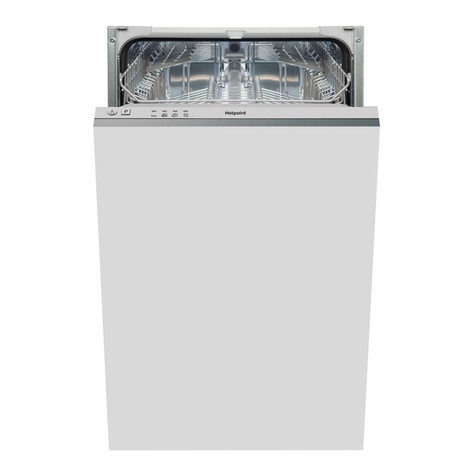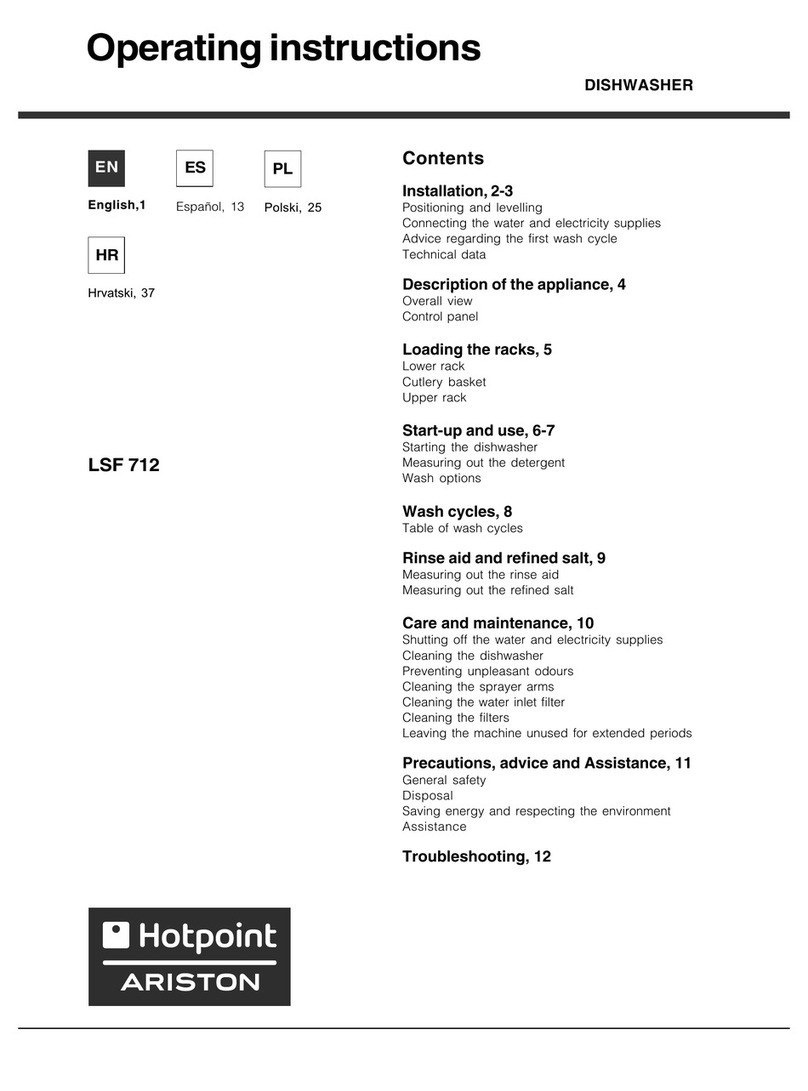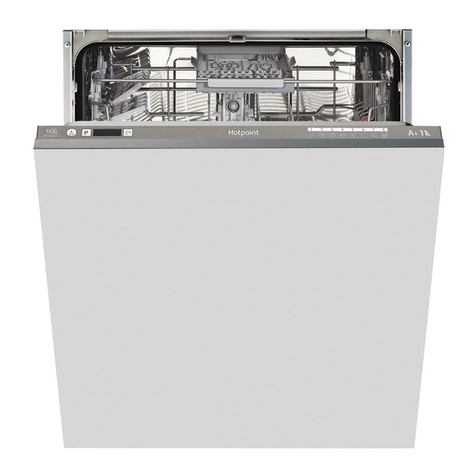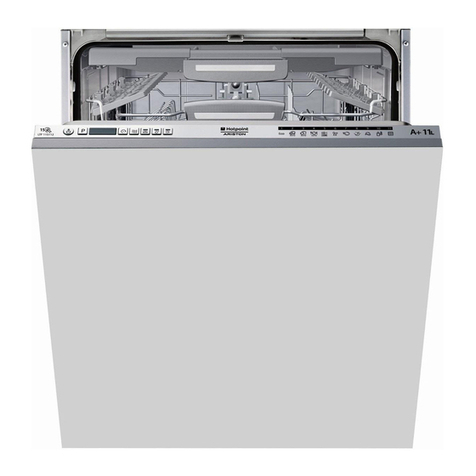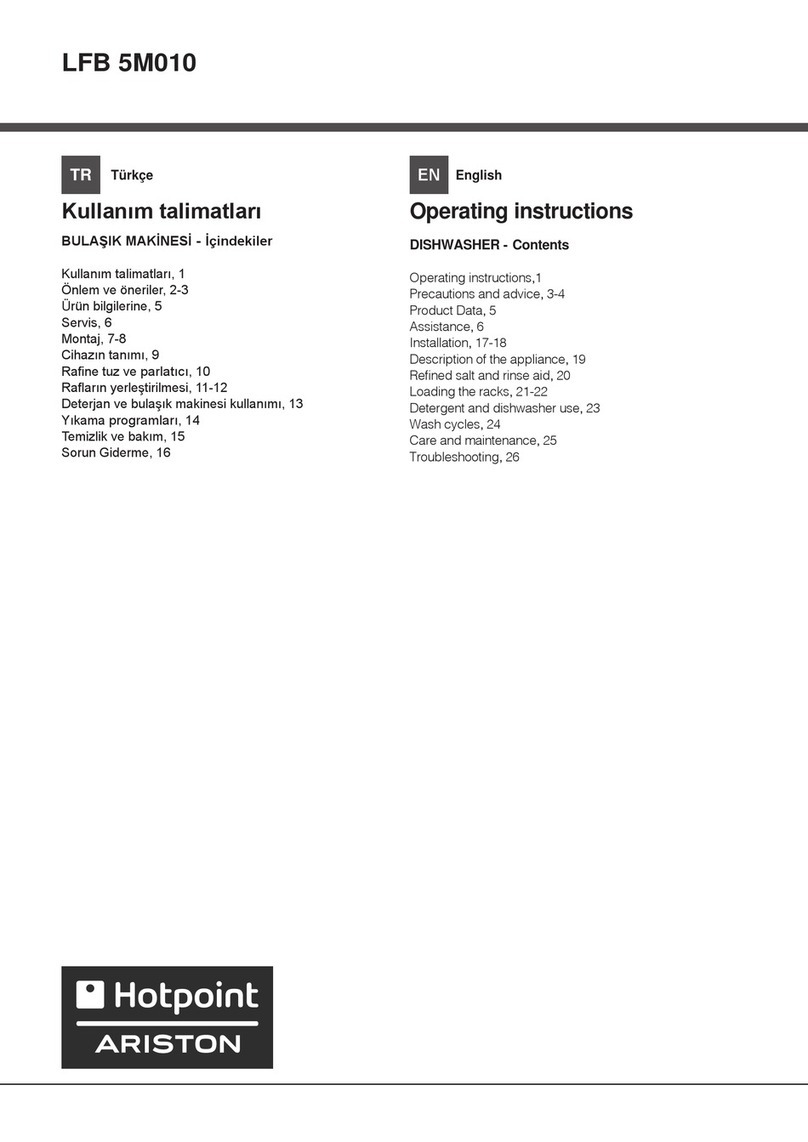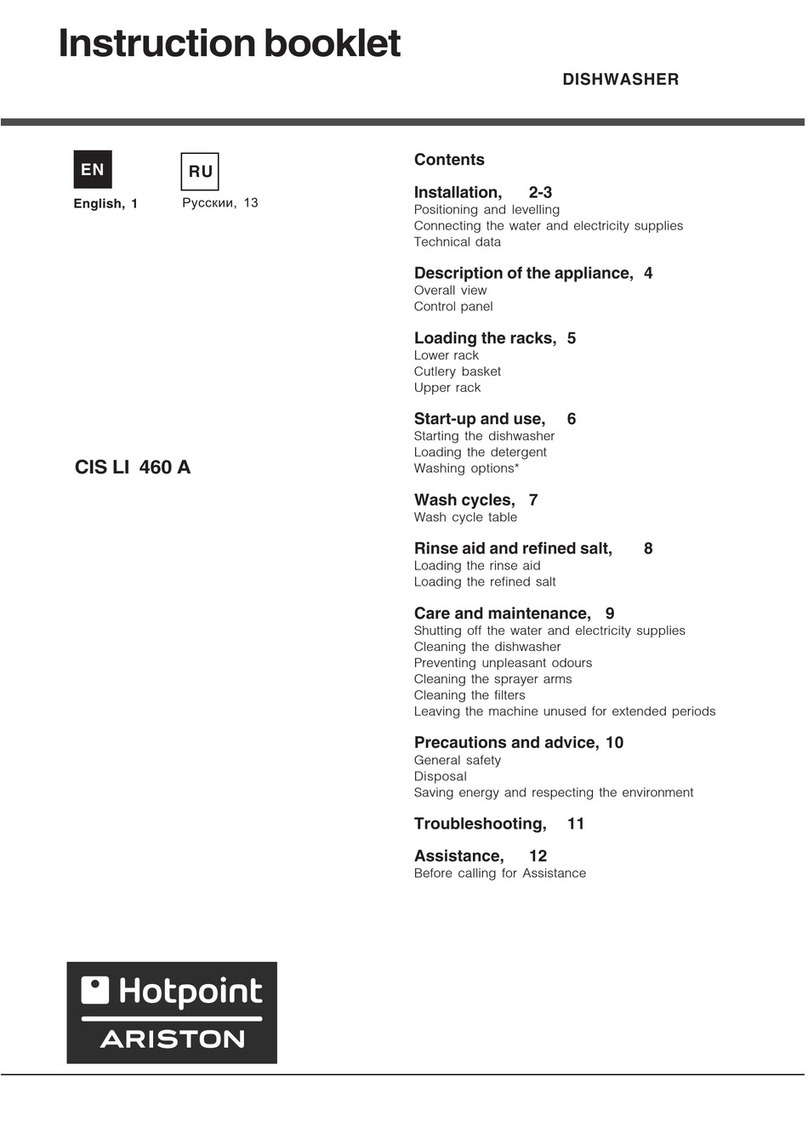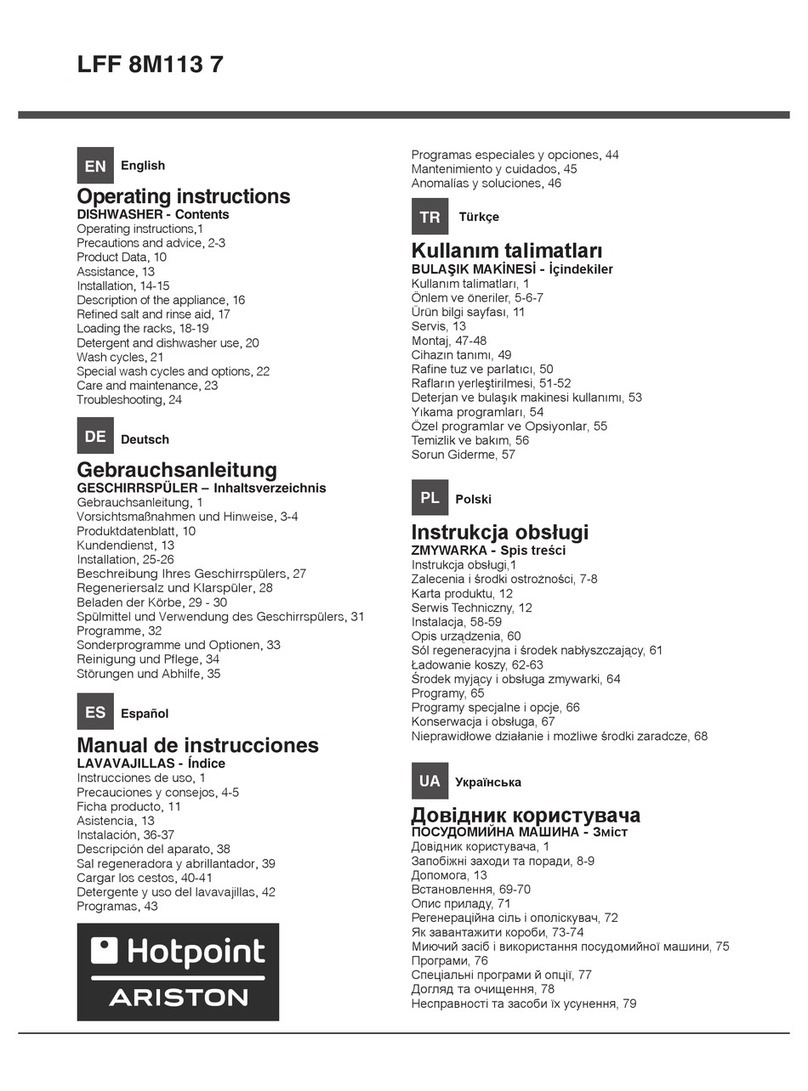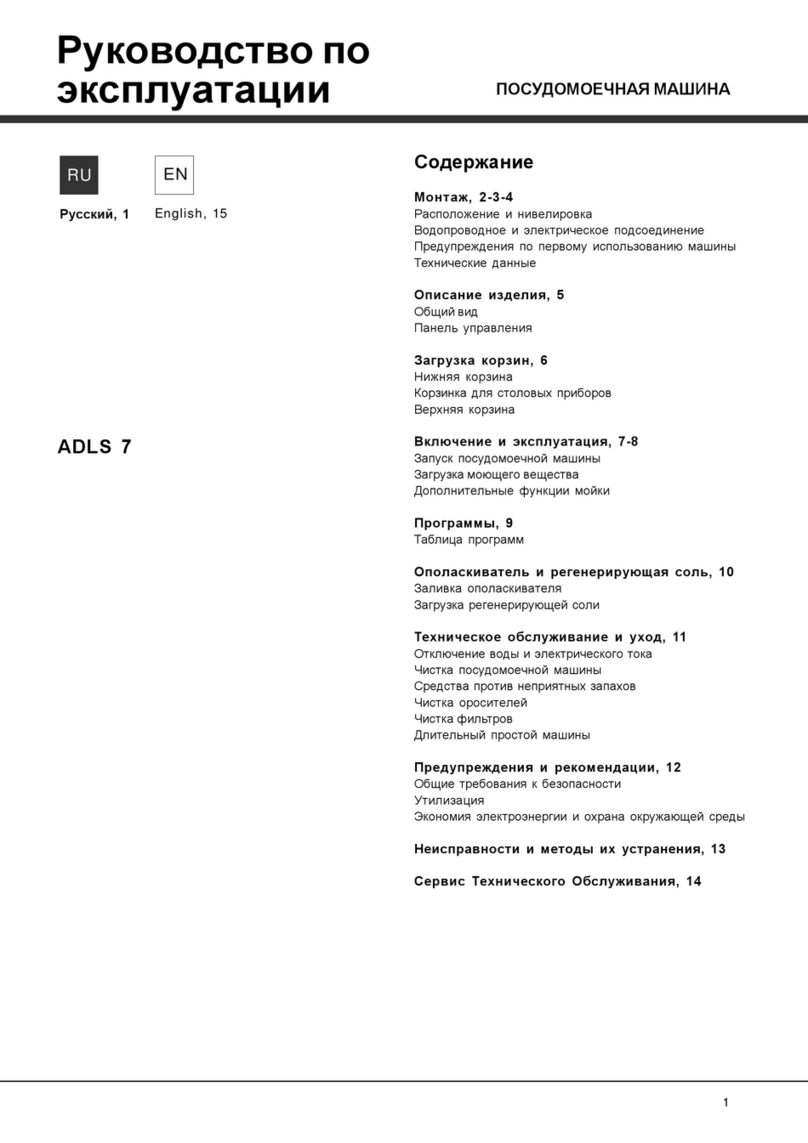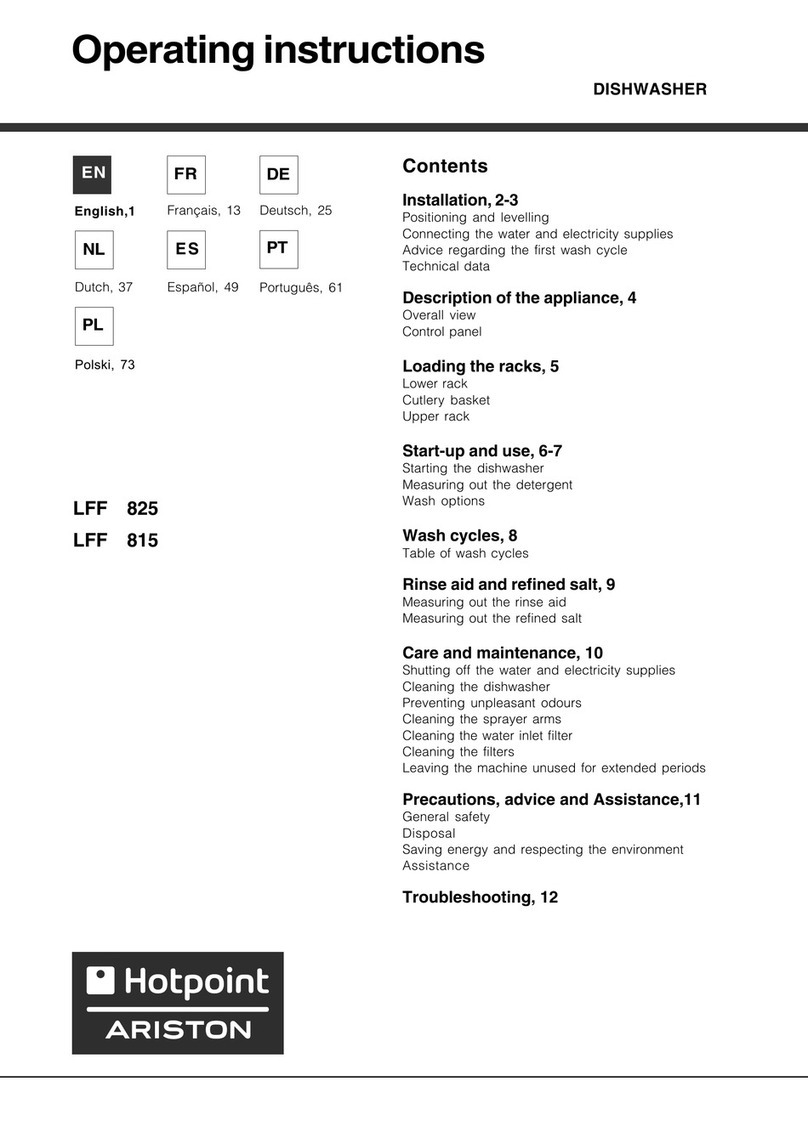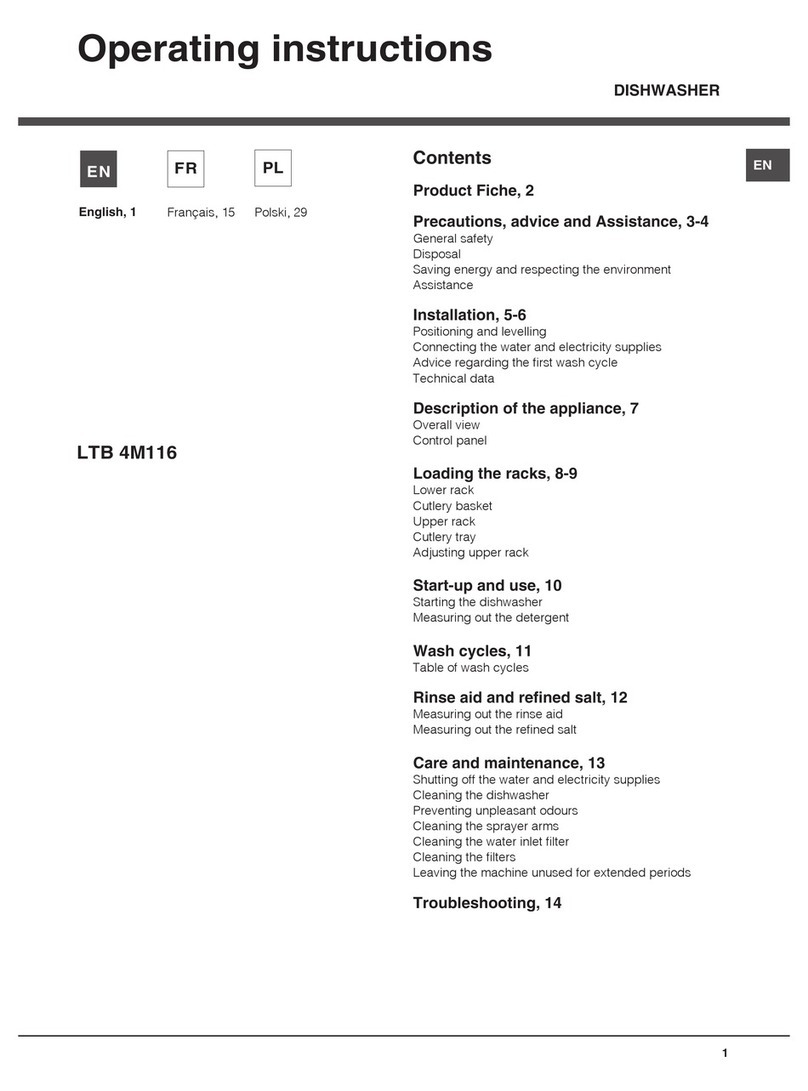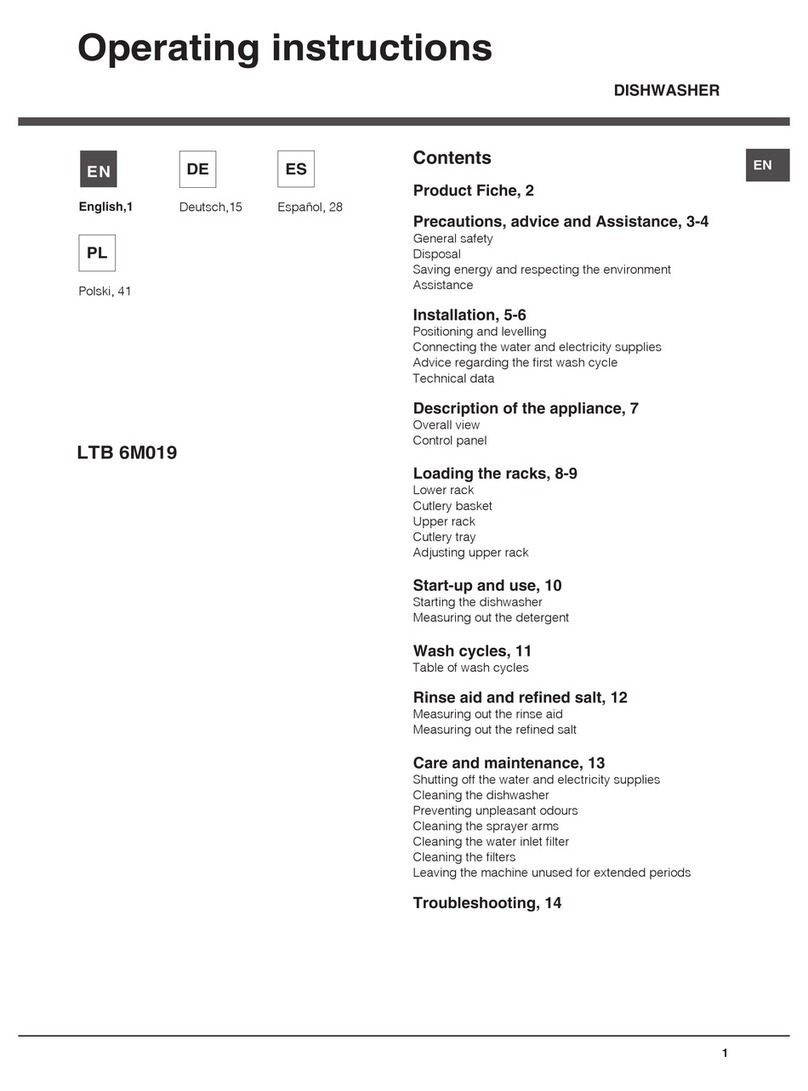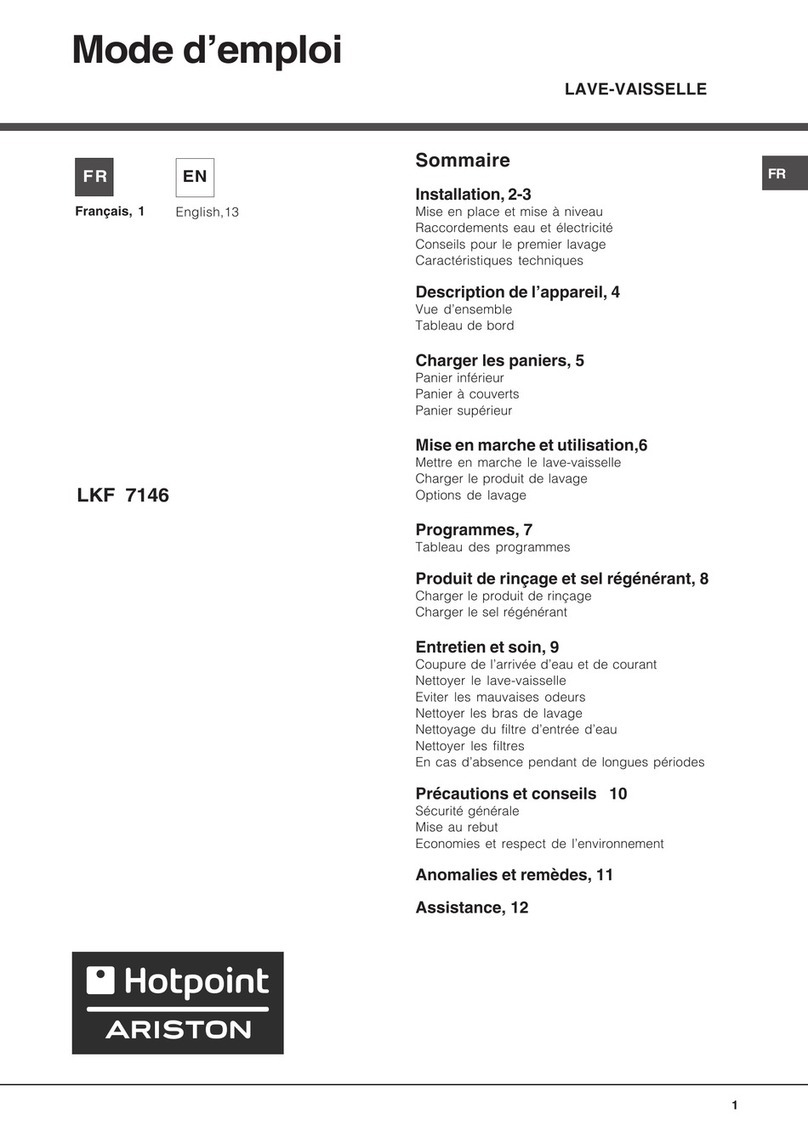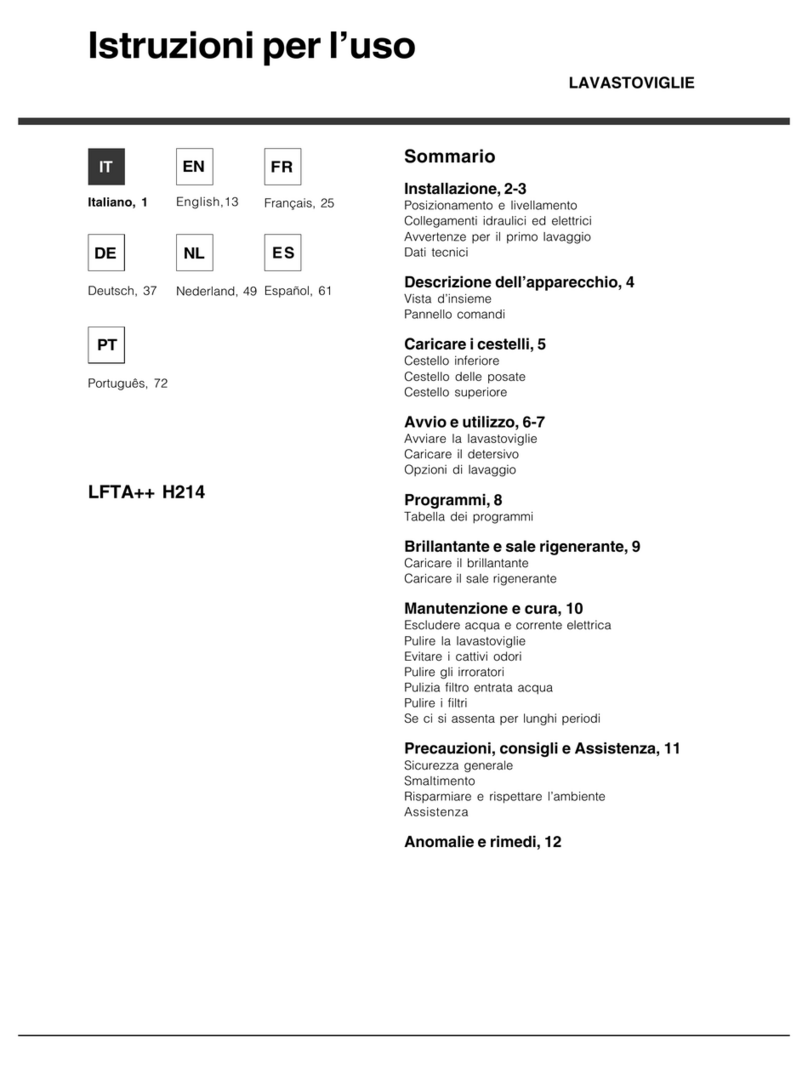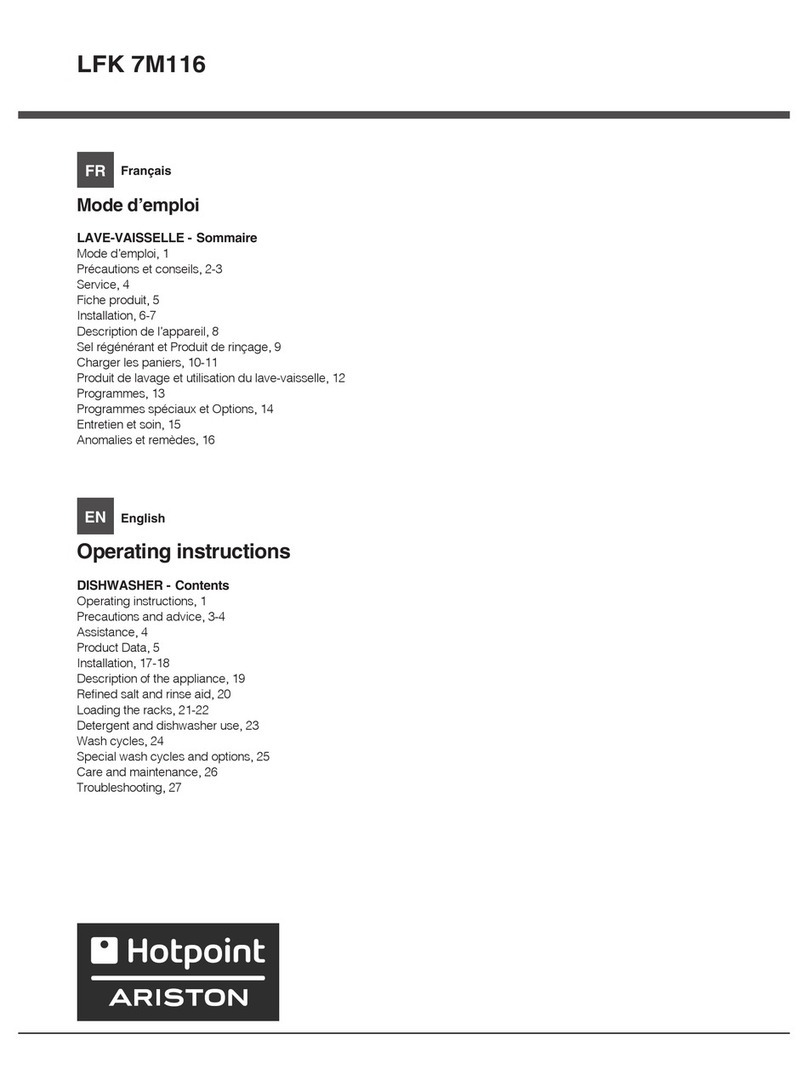8
IT
Brillantanteesale
rigenerante
Usare solo prodotti specifici per lavastoviglie.
Non usare sale alimentare o industriale nè detersivi per
il lavaggio a mano.
Seguire le indicazioni riportate sulla confezione.
Se si usa un prodotto multifunzione, non è necessario
aggiungere brillantante, siconsiglia invecediaggiungere sale,
specie se l’acqua è dura o molto dura.
Non aggiungendo né sale né brillantante è normale
che le spie MANCANZA SALE*e MANCANZA
BRILLANTANTE*rimangano accese.
Caricare il brillantante
Ilbrillantantefacilital’asciugaturadellestovigliefacendoscivolare
l’acqua dalla superficie, così che non rimangano striature o
macchie.
Ilserbatoiodelbrillantante va riempito:
• quando sul pannello si accende la spia MANCANZA
BRILLANTANTE*;1. Aprire il serbatoio ruotando il
tappo (G) in senso antiorario.
2. Versare il brillantante evitando
che fuoriesca. Se accade, pulire
subitoconunpanno asciutto.
3.Riavvitareiltappo.
Non versare MAI il brillantante
direttamente all’interno della
vasca.
Regolare la dose di brillantante
Se non si è soddisfatti del risultato dell’asciugatura, è possibile
regolare la dose di brillantante. Con un cacciavite girare il
regolatore(F) scegliendotra 6posizioni (laregolazione difabbrica
è sul 4):
• sesullestovigliecisono striature, girare versoinumeribassi
(1-3).
• secisonogocce d’acqua omacchiedicalcare girare versoi
numerialti(4-6).
Impostazione durezza dell’acqua
Ognilavastoviglieè corredatadiun dolcificatore dell’acquache,
utilizzando del sale rigenerante specifico per lavastoviglie,
fornisceacquaprivadi calcare per illavaggiodellestoviglie.
Questa lavastoviglie, consente una regolazione che riduce
l’inquinamentoedottimizza le prestazionidilavaggio infunzione
della durezza dell’acqua. Il dato è reperibile presso l’Ente
erogatoredell’acquapotabile.
- Aprire la porta ed accendere la macchina premendo il tasto
ON/OFF.
- Premere il tasto P per circa 5 secondi; si sentono due bip
brevi e lampeggia lentamente sul pannello di controllo la spia
relativa al grado di durezza impostato (Il decalcificatore è
impostato di fabbrica sul n° 2).
- Premere il tasto P in successione fino al raggiungimento
della durezza desiderata (1-2-3-4-5*
Vedi tabella durezza
acqua
).
Es. durezza 1 (spia 1° progr. lampeggia);
durezza 2 (spia 1° progr. accesa, spia 2° progr. lampeggia);
durezza 3 (spia 1° e 2° progr. accese, spia 3° progr.
lampeggia ecc... ecc.)
-Peruscire dalla funzioneattenderealcuni secondi o spegnere
la macchina con il tasto ON/OFF.
Se si utilizzano le pastiglie multifunzione, riempire comunque il
serbatoiodelsale.
(°dH=durezza ingraditedeschi -°fH= durezzaingradi francesi
-mmol/l=millimol/litro)
Caricare il sale rigenerante
Per avere buoni risultati di lavaggio è indispensabile verificare
che il serbatoio del sale non sia mai vuoto. Il sale rigenerante
eliminailcalcaredall’acqua,evitandochesidepositi sullestoviglie.
Ilserbatoiodelsaleè postonellaparteinferioredella lavastoviglie
(
vedi Descrizione
)evariempito:
• quando il galleggiante verde*non è visibile osservando il
tappodelsale;
• quandosulpannellosi accende laspiaMANCANZASALE*;
1. Estrarre il cesto inferiore e svitare il
tappodelserbatoioinsenso antiorario.
2. Solo per il primo utilizzo: riempire il
serbatoiodiacquafinoal bordo.
3. Posizionare l’imbuto*(
vedi figura
) e
riempire il serbatoio di sale fino al bordo
(circa1kg);ènormale che trabocchi un po’d’acqua.
4. Togliere l’imbuto*, eliminare i residui di sale dall’imbocco;
sciacquare il tappo sotto l’acqua corrente prima di avvitarlo,
disponendoloa testain giùefacendodefluirel’acquadallequattro
fessure disposte a stella nella parte inferiore del tappo. (tappo
congalleggianteverde*)
E’ consigliabile effettuare questa operazione ad ogni
caricamento del sale.
Chiuderebeneil tappo,affinchénel serbatoiononentri detersivo
durante il lavaggio (potrebbe danneggiarsi irrimediabilmente il
dolcificatore).
Quando si rende necessario, caricare il sale prima di un
ciclo di lavaggio in modo da eliminare la soluzione salina
traboccatadalcontenitoredel sale.
*Presentesolosualcuni modelli.
G
F
Tabella Durezze Acqua Autonomia media**
contenitore sale
livello °dH °fH mmol/l mesi
1 0 - 11 0 - 20 1,1 - 2 5 mesi
2 12 - 17 21 - 30 2,1 - 3 3 mesi
3 17 - 34 31 - 60 3,1 - 6 2 mesi
4*
34 - 50
61 - 90
6,1 - 9
2/3 settimane
Da 0°f a 10°f si consiglia di non utilizzare sale.
* con questa impostazione la durata dei cicli può prolungarsi.
** con 1 lavaggio al giorno
Downloaded from DishWasher-Manual.com Manuals

